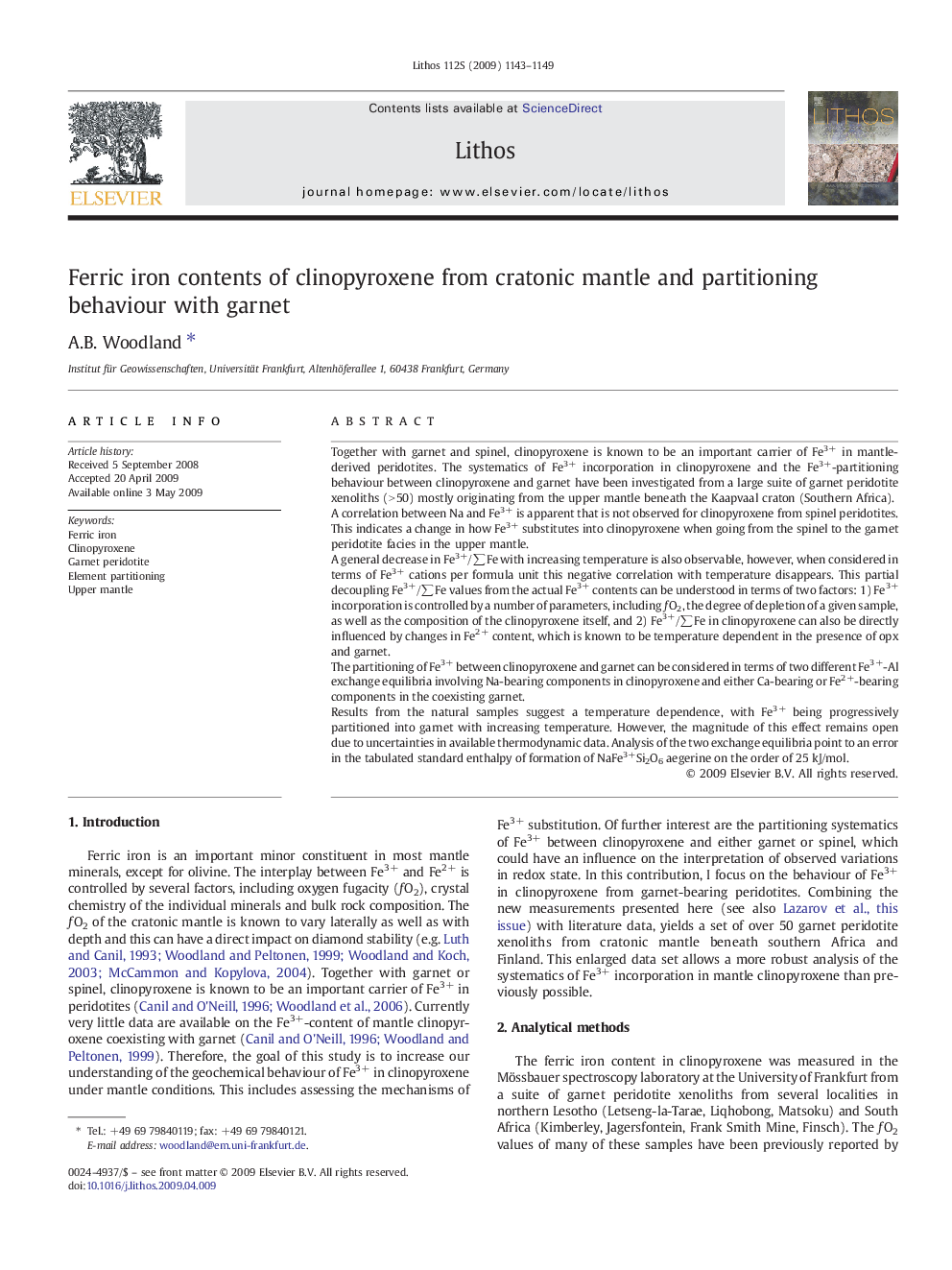| Article ID | Journal | Published Year | Pages | File Type |
|---|---|---|---|---|
| 4717225 | Lithos | 2009 | 7 Pages |
Together with garnet and spinel, clinopyroxene is known to be an important carrier of Fe3+ in mantle-derived peridotites. The systematics of Fe3+ incorporation in clinopyroxene and the Fe3+-partitioning behaviour between clinopyroxene and garnet have been investigated from a large suite of garnet peridotite xenoliths (> 50) mostly originating from the upper mantle beneath the Kaapvaal craton (Southern Africa).A correlation between Na and Fe3+ is apparent that is not observed for clinopyroxene from spinel peridotites. This indicates a change in how Fe3+ substitutes into clinopyroxene when going from the spinel to the garnet peridotite facies in the upper mantle.A general decrease in Fe3+/∑Fe with increasing temperature is also observable, however, when considered in terms of Fe3+ cations per formula unit this negative correlation with temperature disappears. This partial decoupling Fe3+/∑Fe values from the actual Fe3+ contents can be understood in terms of two factors: 1) Fe3+ incorporation is controlled by a number of parameters, including ƒO2, the degree of depletion of a given sample, as well as the composition of the clinopyroxene itself, and 2) Fe3+/∑Fe in clinopyroxene can also be directly influenced by changes in Fe2+ content, which is known to be temperature dependent in the presence of opx and garnet.The partitioning of Fe3+ between clinopyroxene and garnet can be considered in terms of two different Fe3+-Al exchange equilibria involving Na-bearing components in clinopyroxene and either Ca-bearing or Fe2+-bearing components in the coexisting garnet.Results from the natural samples suggest a temperature dependence, with Fe3+ being progressively partitioned into garnet with increasing temperature. However, the magnitude of this effect remains open due to uncertainties in available thermodynamic data. Analysis of the two exchange equilibria point to an error in the tabulated standard enthalpy of formation of NaFe3+Si2O6 aegerine on the order of 25 kJ/mol.
